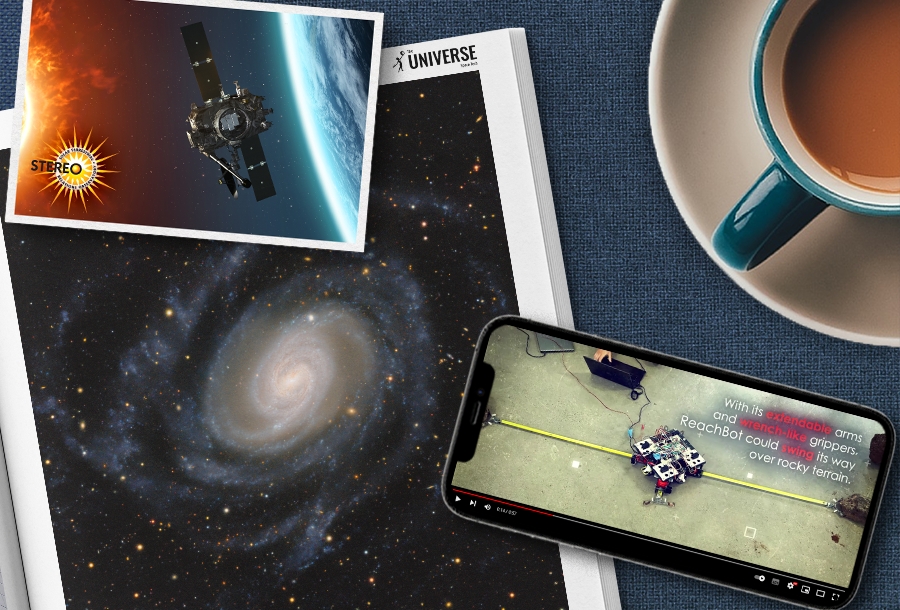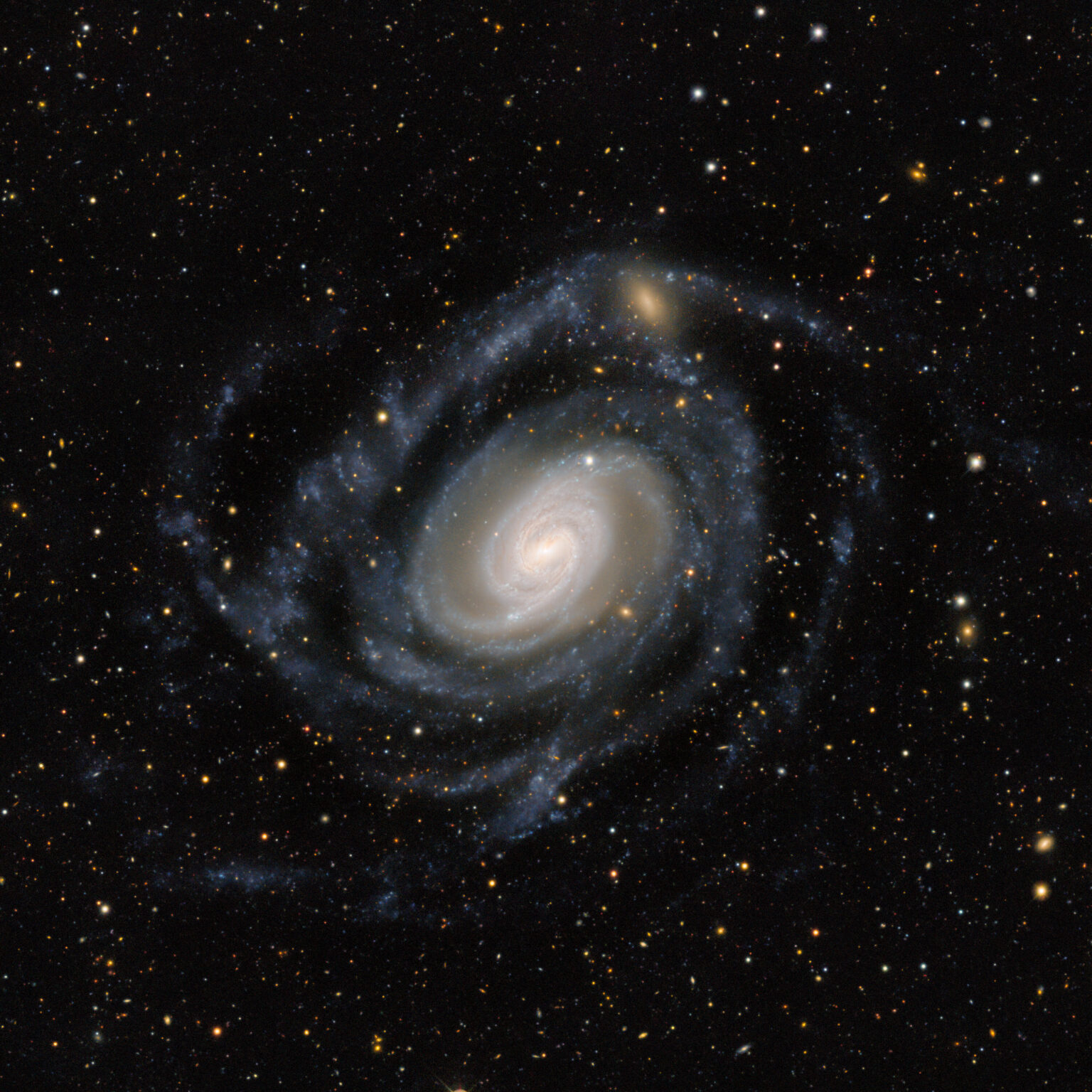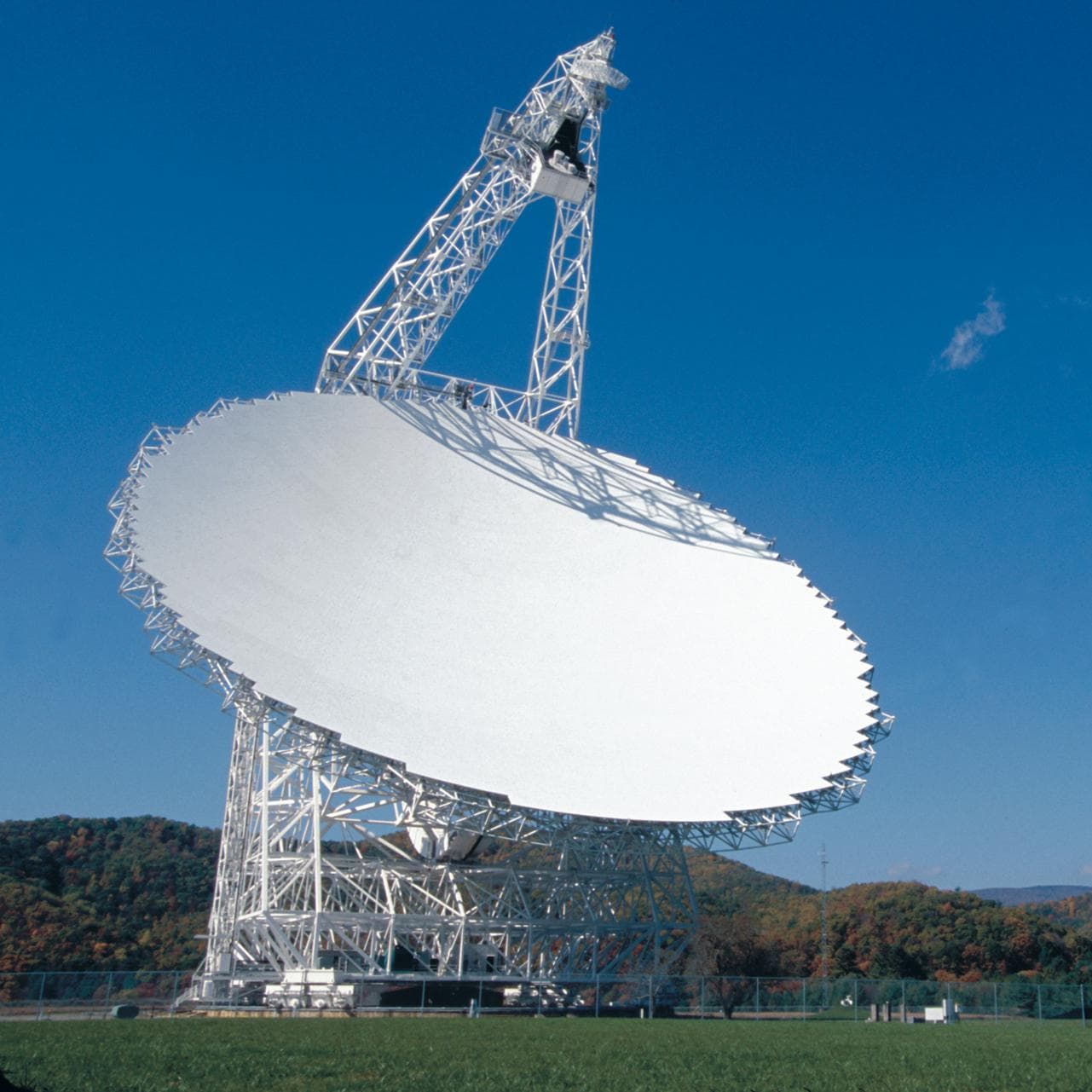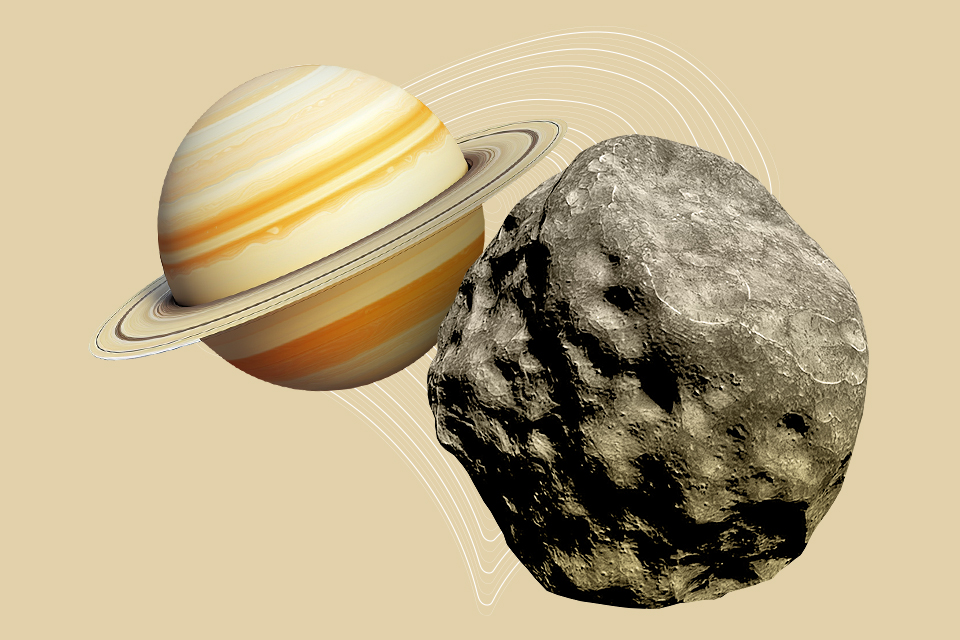Selection of the most interesting space news for the week: In September, a newly discovered comet will be seen in the sky; Mars will be explored by a new robot climber, and we are talking about Phoebe — one of the most mysterious moons of Saturn.

“Science is what you know, philosophy is what you don’t know”
― Bertrand Russell
NASA probe returns to Earth 17 years after launch
On August 12, 2023, the STEREO-A spacecraft built by NASA passed between the Sun and the Earth, making the first flight of our planet in 17 years. This visit provided scientists with an opportunity to collect unique data about our luminary.
The STEREO mission began in October 2006, when NASA launched a pair of identical probes, designated STEREO-A and STEREO-B. They were placed in a heliocentric orbit close to the Earth, after which they were “pulled apart” in such a way that one spacecraft gradually began to “overtake” the Earth, and the other, on the contrary, “lagged behind” it. Over time, the STEREO probes settled into orbit in such a way that they were able to use the stereoscopic effect to observe the Sun. This allowed them to obtain three-dimensional images of various structures and phenomena on the surface of our star. Also, the vehicles were able to determine the direction of movement of coronal ejections; this is an unattainable possibility for single space observatories like SOHO. Unfortunately, in October 2014, NASA lost contact with the STEREO-B spacecraft. However, its “twin brother” remained in the ranks, and still continues to conduct observations.
July 2023, the hottest month in the history of observations
NASA reported that the average temperature on Earth in July 2023 was higher than any July before it. This is true for both land and ocean. This means that last month was the hottest in the entire history of observations. According to the data obtained, the average temperature on Earth in July 2023 was 0.24 °C higher than in any other July since 1880. By the way, the last record that was exceeded this year was recorded only in 2021. If we compare the recorded temperatures between 1951 and 1980, they will be higher by 2.1 °C. And since July is the hottest month of the year, if we start from the average temperature across the planet, this means that last month was the hottest in history. Horrible heat was observed in North and South America, Africa and Asia.
Robot climber will explore caves on Mars
A robot with expandable appendages may soon be on Mars in the coming years. Thanks to its design, it will be able to move on vertical surfaces and explore caves and lava tubes. A team of engineers from Stanford University is developing a robot project for space exploration called ReachBot. Its main feature should be expandable appendages, which will help it not only cling to surfaces, but also rest against them and thus “hang” in various narrow places.
Its necessity is due to the fact that caves and lava tubes have been repeatedly found on Mars. The latter are tunnels that have access to the surface in the form of vertical shafts. They can tell us a lot about the history of the planet, but modern rovers are simply not able to get into them. ReachBot will work by combining two different technologies in its design: sliding structures and manipulators. Separately from each other, they have long been used in space. The first one helps to fit large devices like James Webb into the rocket. The second is used on the ISS to move cargo and elements of the station. But together they will be united for the first time.
New comet to decorate the Earth’s sky in September
Astronomers have discovered a previously unknown comet. In September, it will get closer to the Sun and may become visible in the Earth’s sky. The new comet was found in images taken by Japanese astronomer Hideo Nishimura. After its existence was confirmed by other observers, the tailed guest received the official designation C/2023 P1 (Nishimura). At the moment, not much is known about the newly discovered comet. But it has already managed to attract the attention of astronomers. The fact is that next month C/2023 P1 (Nishimura) will pass the perihelion of its orbit. On September 18, it will approach the Sun at a distance of 0.22 AU (32 million km). It’s closer than Mercury’s orbit..
Scientists invent a new method for studying anomalies under the surface of other planets
A new method of constructing and verifying models of planets allows finding out what is hidden under their surface based on the study of gravitational anomalies. This allows scientists to find not only large cavities, but also areas filled with denser material.
The new method first selects an arbitrary model of the structure of the planet and checks how it corresponds to gravitational anomalies. To do this, it uses Bayesian analysis, that is, statistics that are not tied to a real structure. After receiving the result, the computer changes the model hundreds of thousands and millions of times until it finds a structure that exactly matches not only gravitational, but also geological data. The researchers note that THeBOOGIe, which can be improved with additional measures, is well suited to complement models of the internal structure of planets based on seismic data and to determine the internal features of smaller bodies that do not have a perfectly layered structure.
Photo of the week

The presented image was obtained using the Dark Energy Camera (DECam) installed on the 4-meter Victor Blanco Telescope at the Cerro Tololo Inter-American Observatory in Chile. It shows the galaxy NGC 289, which is located at a distance of 75 million light-years from Earth in the direction of the constellation Sculptor. Like the Milky Way, it is classified as a spiral galaxy with a bar. At the same time, NGC 289 is much larger than our galaxy. Its bluish spiral arms extend more than 100 thousand years into the surrounding space.
Interesting figure — 11,680 stars

Scientists from the University of California at Los Angeles used a radio telescope to study 11,680 stars that were previously studied by the TESS space telescope. They come to the conclusion that there are no intelligent beings with a high probability closer than 360 light-years away.
The study was conducted as part of the program to search for alien life “Are You Alone in the Universe?”. The basis for the program was the research of the Transiting Exoplanet Survey Satellite space telescope, better known as TESS. It gave scientists the opportunity to identify a lot of objects that could turn out to be planets, and scientists decided to check whether a radio signal was coming from any of them. To do this, they used the radio telescope of the Green Bank Observatory. The research lasted from 2020 to 2023. Scientists conducted observations at wavelengths from 1.15 to 1.73 GHz. After the volunteers processed the signals, it turned out that absolutely all of them were natural. This has allowed scientists to conclude that at a distance of 360 light-years from Earth, no star with a probability of 98.7 percent has a radio transmitter which signals we are able to catch.
Something to read on the weekend

On August 16, 1898, DeLisle Stewart, an employee of the Arequipa Observatory, took a photograph of Saturn. Unbeknownst to him, this image captured an unknown moon of the planet, which would later be named Phoebe. Commemorating the 125th anniversary of this event, we are pleased to offer you some details about this celestial body, which is one of Saturn’s most unusual moons.
Follow us on Twitter to get the most interesting space news in time
https://twitter.com/ust_magazine
